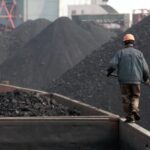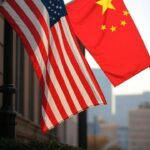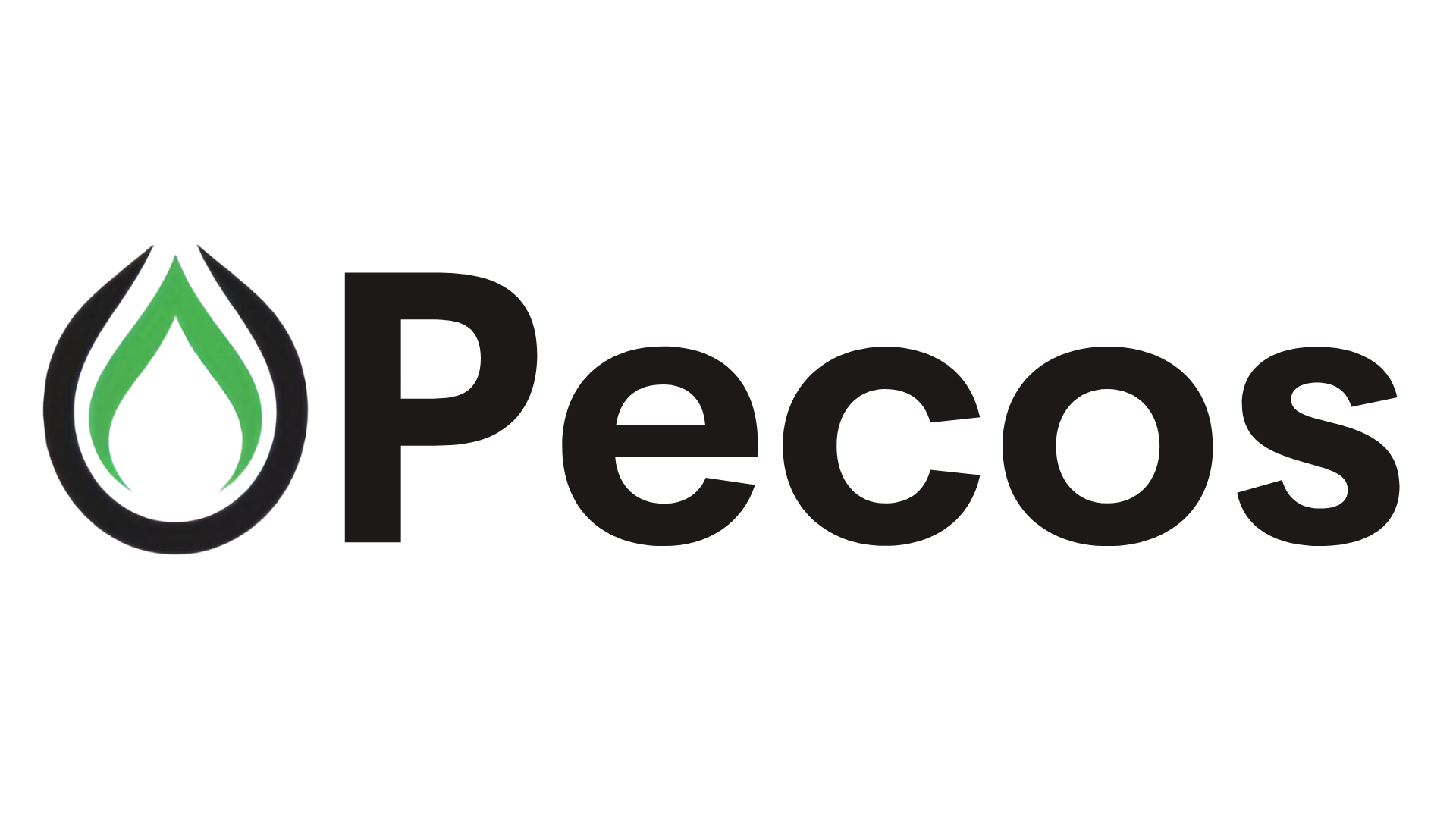Energy News Beat
China’s energy landscape is a study in contrasts: the world’s largest coal consumer and carbon emitter, yet also the global leader in renewable energy deployment. As Western nations pursue ambitious Net Zero targets, often at significant economic cost, China has capitalized on this movement by exporting clean energy technologies at premium prices to fund its own energy transition. This article examines China’s current grid energy mix, its permitted and planned new energy sources, and how its export-driven economy—particularly in solar panels, electric vehicles (EVs), and batteries—has leveraged Western demand to finance its energy ambitions.
China’s Grid Energy Mix: Coal Dominance Meets Renewable Surge
In 2024, China’s electricity generation reached approximately 9,200 TWh, reflecting a 5% year-on-year increase driven by industrial growth and electrification. The energy mix, based on recent data, is as follows:
-
Coal: 55% (~5,060 TWh)
-
Renewables (total): 32% (~2,944 TWh)
-
Hydropower: 13% (~1,196 TWh)
-
Wind: 9% (~828 TWh)
-
Solar: 8% (~736 TWh)
-
Biomass and Geothermal: 2% (184 TWh)
-
-
Natural Gas: 5% (~460 TWh)
-
Nuclear: 5% (~460 TWh)
-
Oil: <1% (~92 TWh)
Coal remains the cornerstone of China’s grid, though its share has declined from 65% in 2015 to 55% in 2024, reflecting a pivot toward cleaner sources. Renewables now account for 32% of generation, with wind and solar showing the fastest growth. By the end of 2024, China’s installed capacity hit 2,000 GW, with renewables comprising 52% (1,040 GW), including 450 GW of solar, 400 GW of wind, and 150 GW of hydropower.
This mix highlights China’s dual strategy: maintaining energy security through coal while scaling renewables to meet domestic and international climate goals. However, coal’s dominance ensures China accounts for over 50% of global coal consumption, complicating its 2060 carbon neutrality pledge.
New Energy Sources: Permitted and Planned
China’s energy roadmap is shaped by its 14th Five-Year Plan (2021–2025) and long-term “dual carbon” goals (peaking emissions by 2030, neutrality by 2060). The following outlines new energy sources permitted, under construction, or planned as of 2025:
-
Solar and Wind: China is on track to exceed its 1,200 GW solar and wind capacity target by 2027, three years ahead of schedule. In 2024, it added 230 GW of solar and 80 GW of wind, representing 60% of global additions. Mega-projects, such as desert-based clean energy bases in Gansu and Xinjiang, integrate solar, wind, and storage, with 250 GW planned by 2030. Long-term projections estimate 3.5 TW of renewable capacity by 2035.
-
Nuclear: With 58 reactors operational (57 GW), China has 25 reactors under construction (26 GW) and plans for 150 GW by 2035. New designs, including small modular reactors, aim to enhance flexibility and reduce costs.
-
Geothermal and Biomass: Geothermal capacity is modest (40 MW in 2024), but exploration targets 500 MW by 2030. Biomass, at 40 GW, is expanding through co-firing with coal, with 10 GW of new projects permitted in 2024.
-
Coal with Green Retrofits: Despite renewable growth, China permitted 70 GW of new coal plants in 2024, focusing on “flexible” units to balance intermittent renewables. Policies promote carbon capture, utilization, and storage (CCUS) and green ammonia co-firing, with 50 GW of coal plants targeted for retrofitting by 2030.
-
Energy Storage and Grid Upgrades: China added 30 GW of grid-scale storage in 2024, including 20 GW of pumped hydro and 10 GW of battery storage (lithium-ion and sodium-ion). Ultra-high-voltage (UHV) transmission lines, spanning 40,000 km, connect western renewable hubs to eastern cities, with 15 new lines planned by 2030.
These initiatives reflect China’s pragmatic approach: scaling low-carbon sources while preserving coal as a reliability anchor, especially after energy shortages in 2021 exposed vulnerabilities in over-relying on volatile coal markets.
Funding the Transition: Exports and Western Net Zero Demand
China’s energy investments are monumental, reaching $750 billion in 2024, or 35% of global clean energy spending. This includes $500 billion for renewables, $100 billion for grid infrastructure, and $50 billion for nuclear and storage. The question is: how does China, facing economic headwinds like a property sector slump, afford this? The answer lies in its dominance of clean energy supply chains and high-margin exports, fueled by Western Net Zero policies.
-
Solar Panels: China produces 85% of global solar panels, exporting 100 GW in 2024. While domestic oversupply slashed prices by 40% in 2023–2024, exports to Europe, the Middle East, and Southeast Asia commanded premiums of 20–30% due to Western demand for Net Zero compliance. Europe alone absorbed 55% of China’s solar exports, worth $18 billion.
-
Electric Vehicles (EVs): China exported 1.5 million EVs in 2024, up 25% from 2023, generating $30 billion. Brands like BYD and NIO leverage subsidies to offer competitive pricing, but in markets like the EU, tariffs and demand allow markups of 15–20%. Europe and Asia accounted for 80% of EV export revenue.
-
Batteries: With 65% of global battery production, China exported 250 GWh of batteries in 2024, valued at $35 billion. High demand for lithium-ion and emerging sodium-ion batteries in Western grid storage and EV markets ensures robust margins, particularly in North America and Europe.
From 2020 to 2024, China’s clean energy exports grew by 40%, with revenues reaching $83 billion in 2024. Western Net Zero policies, including carbon tariffs and subsidies, have created a lucrative market for Chinese products, as local manufacturers in the US and EU struggle to match China’s scale and cost advantages. For example, the EU’s Carbon Border Adjustment Mechanism (CBAM) incentivizes low-carbon imports, indirectly boosting Chinese exports despite tariffs. Meanwhile, domestic oversupply keeps China’s own deployment costs low, creating a virtuous cycle of investment and expansion.
This export model has fueled trade tensions. The US imposed 50% tariffs on Chinese EVs and 25% on solar panels in 2024, while the EU launched anti-subsidy probes into Chinese wind turbines and EVs. Yet, China’s manufacturing dominance—built on decades of investment and economies of scale—makes it indispensable to global decarbonization, allowing it to fund its energy transition partly on the West’s dime.
The Coal Conundrum and Global Implications
China’s renewable progress is undeniable, but its coal reliance casts a long shadow. In 2024, coal consumption rose 1%, reaching 4.5 billion tonnes, driven by new plants and industrial demand. With 140 GW of coal capacity under construction and 260 GW in planning, China risks locking in 180 Gt of CO2 emissions by 2060, nearly 40% of the global 1.5°C carbon budget.
This tension underscores a broader critique: while China invests heavily in renewables, its emissions grew 1.2% in 2024, offsetting Western reductions. The West’s reliance on Chinese clean tech, while accelerating global decarbonization, indirectly subsidizes China’s coal expansion by bolstering its economy. Critics argue that China’s “green exports, coal at home” strategy exploits Western idealism, but defenders note that China’s renewable scale lowers global clean energy costs, benefiting all.
Conclusion: A Strategic Energy Juggernaut
China’s energy strategy is a masterstroke of opportunism, blending coal reliability with renewable dominance to secure its position as a global energy superpower. By exporting clean technologies at premium prices, China has turned Western Net Zero zeal into a financial engine for its own transition, funding massive investments in solar, wind, nuclear, and storage. Yet, its coal expansion raises questions about its long-term climate commitments.
For Western nations, the challenge is clear: competing with China’s manufacturing prowess requires innovation and investment, not just protectionism. As tariffs rise and supply chains shift, the West must balance affordability, security, and climate goals without inadvertently bankrolling China’s dual-track energy empire. The global race to Net Zero is as much an economic contest as an environmental one—and China is playing to win.
The post China’s Energy Mix and Investment Made on the Backs of the Western Net Zero Movement appeared first on Energy News Beat.








